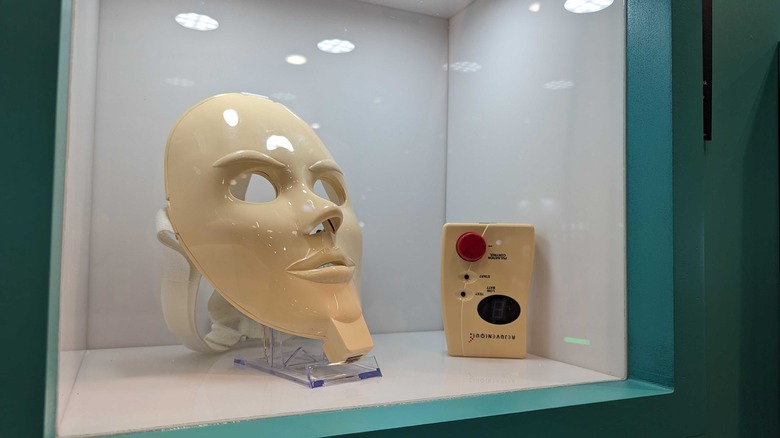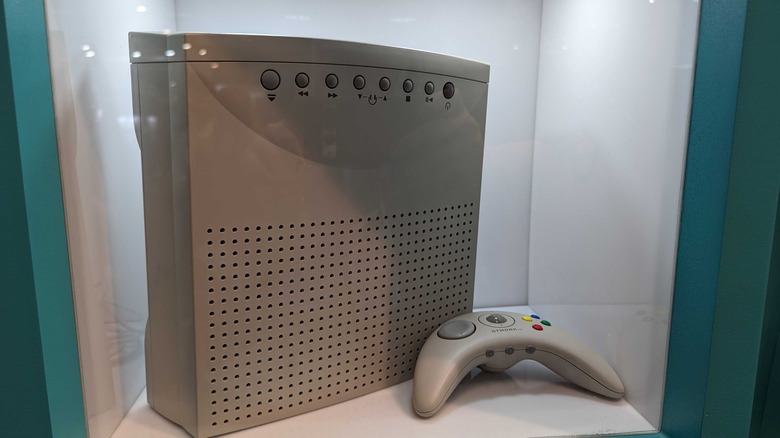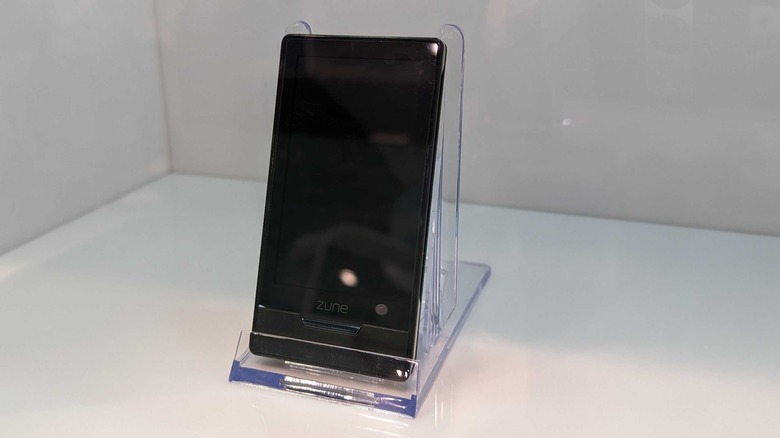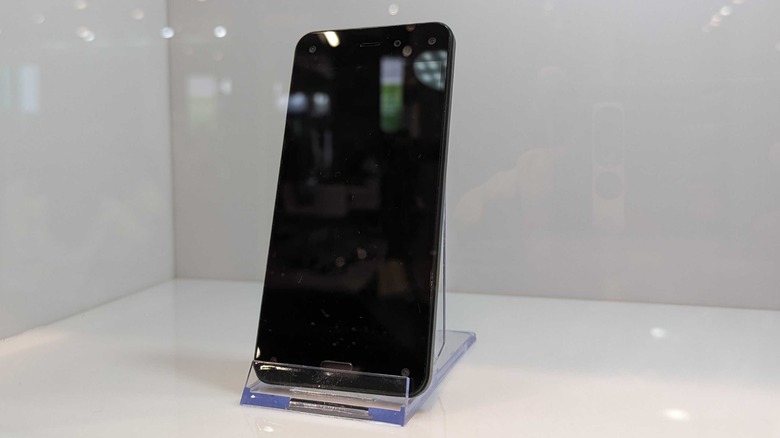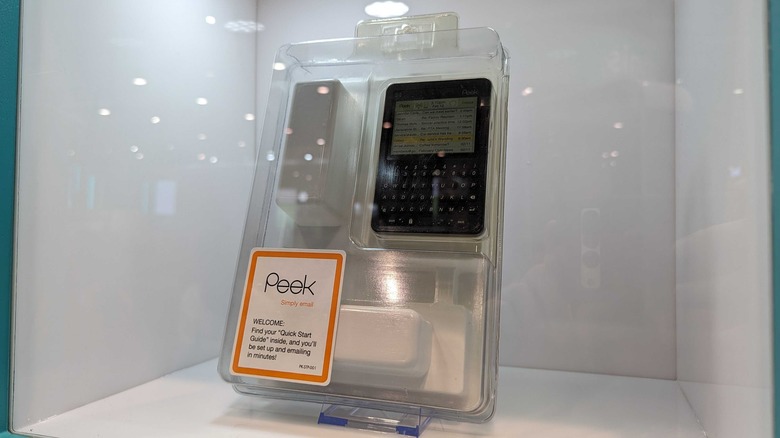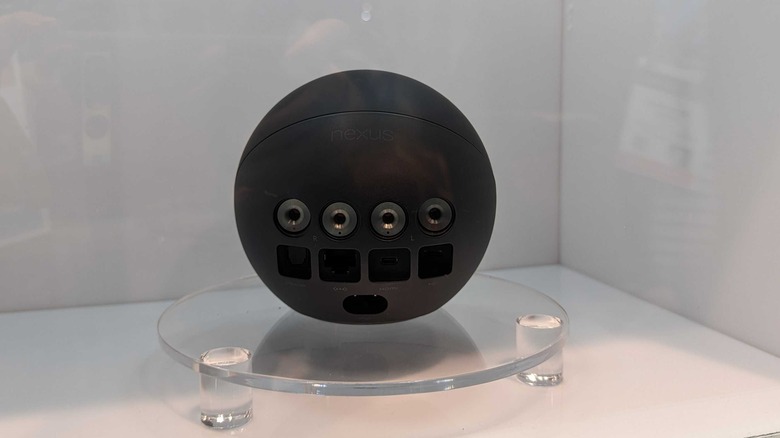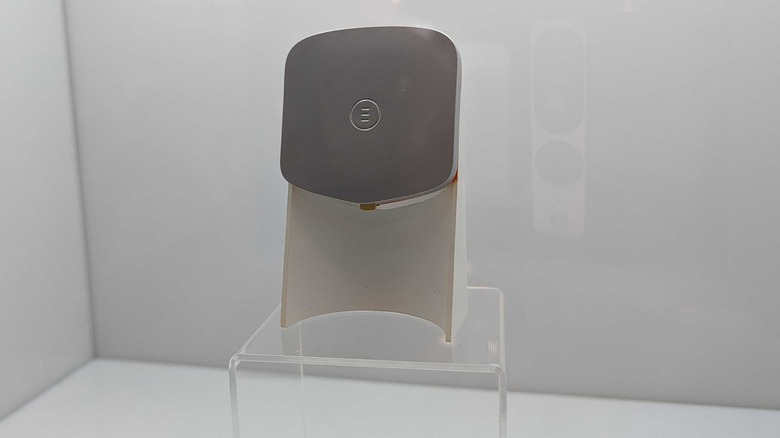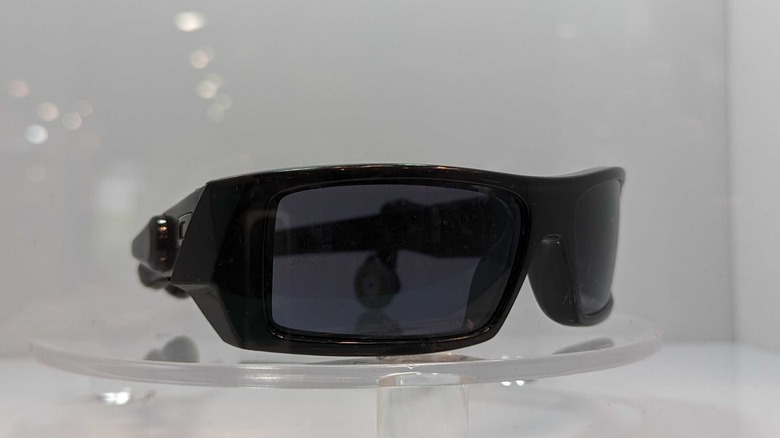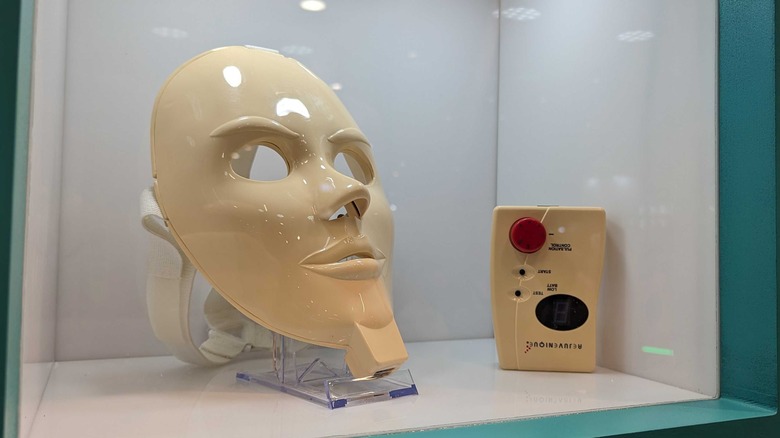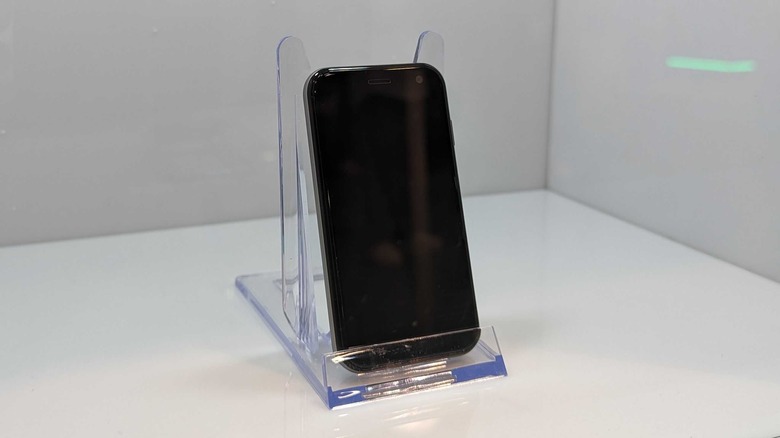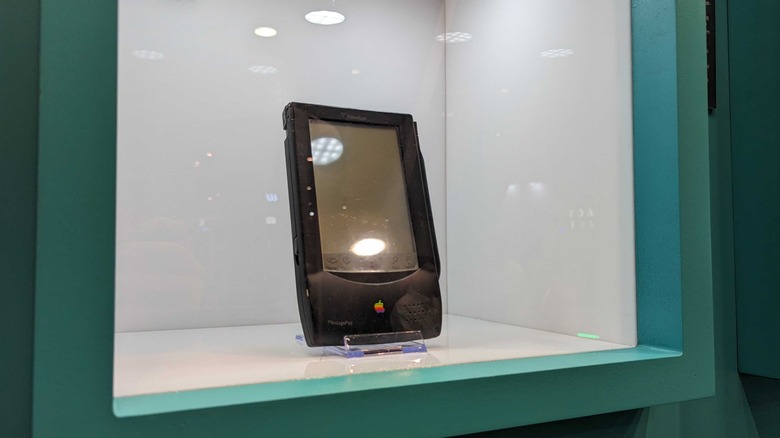The Top 10 Biggest Tech Gadget Failures Of All Time
CES is an event designed to showcase the next big things in the tech world. It's a platform where someone can take a great idea and show it to the world. However, it's also hosted its fair share of flops. Some of these flops make it back to the show years after they debuted there, thanks to "The Exhibition of Failed Ideas." The display, which is now in its second year, is there to highlight some of tech's biggest failures and explain why they all went wrong.
No one is safe, and larger companies may actually have a greater chance of getting a product into this hall of shame. If a small company produces some rubbish, it will likely remain in obscurity. But the likes of Google, Amazon, and Microsoft have the visibility to make sure their duds live on in the public consciousness.
Some of the products on this list may also look similar to bits of today's mainstream tech. There's an argument that those products were just released a bit before their time, and either the technology or demand just wasn't there yet. Others were just downright weird, bad or, in some cases, dangerous.
Whatever the cause of their failure, here are some of tech's biggest flops, courtesy of prelaunch.com's "Exhibition of Failed Ideas."
The Apple Pippin
The mid-'90s was somewhat of a console gaming golden age. The fifth console generation saw Sony's original PlayStation going head-to-head with the Nintendo 64. PC gaming was in a good place with the likes of Doom causing an uproar in society's more worried circles, while building solid memories in others, and online gaming was just over the horizon in the form of the Sega Dreamcast.
As with most popular technologies, Apple wanted a slice of the action. The Silicon Valley giant's foray into the console world came in the form of the Apple Pippin, a multimedia platform that could play games, play media, and function as a PC. It had its own controller, and the platform itself was licensed out to third parties who subsequently built and released their own versions. While some aspects of the Pippin could be described as visionary, particularly the decision to create an entertainment hub not too dissimilar from modern consoles, the concept failed utterly.
Despite Apple targeting the high end, as they usually do, the hardware was reportedly underwhelming, sales were abysmal, there were few games on the platform, and the whole thing died a very quiet death. If Apple took any lessons from the Pippin, they didn't involve not catering to the affluent by charging an absolute fortune for their products. That's still the company's modus operandi to this day, and essentially its gameplan for the upcoming Vision Pro.
Microsoft Zune
Whenever a big tech firm launches a successful product, its rivals are never far behind with their own take on it. Such was the case for Microsoft's Zune MP3 player, an answer to Apple's iPod that hit the market five years after the fruit-based company's audio storage device first took the world by storm.
Microsoft's Zune could store and play a lot of music, but its initial colors were a bit off, and it was a lot larger than similar electronics of the time period. It offered no third-party support, and relied on WMA files, rather than the far more popular MP3 format.
The Zune wasn't actually a bad piece of kit. Some people even have nostalgia for theirs. The issue is that the Zune isn't as good as an iPod, and Sony's marketing was nowhere near as good as Apple's. It also came out after Apple's MP3 player had cornered the market, putting it at even more of a disadvantage. As a result, the iPod became wildly successful, and Microsoft's rival system chugged on for a while before finally calling it a day in 2012.
Amazon Fire Phone
Amazon products can go one of two ways. The company's home assistants and smart speakers are generally very well made, generously priced, and do their jobs commendably. Its tablets, on the other hand, tend to be worse than a bottle of Tabasco brand eye wash. But buried in the company's recent history is a tech failure so bad that it "nearly took Amazon's reputation down with it."
The Fire Phone itself had a few unique features, including a 3D effect on the screen which would rotate app icons based on the user's head position. The retail giant also abandoned a marketing strategy that has served it very well over the years. While some products — like the Echo series of smart speakers — are occasionally sold at very low price points, the Fire Phone was priced to compete directly with the likes of the Samsung Galaxy and Apple's iPhone.
Samsung and Apple were both well established in the smartphone market, with loyal followings and years of success to build upon. Amazon was brand new in the space, and arguably shouldn't have tried to push straight to the top. Eventually, poor sales led to a situation where people could pick up a Fire Phone for $0.99, but $170 million worth of unsold inventory still wound up getting dumped.
Twitterpeek
Imagine paying for a device designed for Twitter and Twitter alone. You can't use it to make calls, browse the web, or do anything off-platform. Well, that device exists and a company called Peek released it back in 2009. While smartphones were beginning to take the world by storm around that time, and would eventually be many people's go-to devices for social media on the move, it is worth noting that Apple's App Store didn't have a dedicated, and free, official Twitter app until 2010 when popular third-party app Tweetie was acquired by the company that is now known as X. Many people had to access social media via a mobile browser, which is still a harrowing experience close to 15 years on. Twitter was also becoming incredibly popular. These factors combined mean a dedicated tweeting device may seem a bit silly, but it wasn't a ridiculous concept in 2009.
According to reviews from the time, it handled profiles badly, links to external sites were text-only, there was no search function, you couldn't follow people via the device or read their older tweets, you had to click enter on tweets to view the entire post, and the device was generally clunky all round. From the sound of things, Twitterpeek was dead on arrival, and the smartphone and its functionality turning up to truly nail its coffin shut probably didn't make too big a difference.
Google Nexus Q
While Google is one of the most successful tech companies in existence, they've had their share of unmitigated failures. While Stadia and Google Glass quickly spring to mind, the product on the top of the reject pile is undoubtedly the Nexus Q. The concept itself was pretty smart. You could easily connect a phone or tablet to the spherical object, and subsequently to your home entertainment system. Content could also be sent to the cloud via the Nexus Q, and media could be streamed from the likes of YouTube and Play Music.
The Nexus Q failed horribly for a couple of reasons. The first was the price. While a streaming hub is handy, spending $299 on the unit itself, followed by $399 for a set of accompanying speakers and $49 for the official cables, is pretty excessive. It all comes in at just under $750, and that in itself isn't particularly excessive in the home entertainment world. However, many potential customers seemingly believed that the Nexus Q was severely overpriced. The issue was then compounded by platform restrictions. While similar devices included access to things like Netflix, Hulu, and Spotify — the Nexus Q only allowed Google-owned apps. So if the song you like isn't on YouTube or Play Music, or the show you want isn't on Play Movies, you're out of luck. The Nexus Q had potential, but will forever be known as one of Google's biggest mistakes.
Juicero
Juicero is a genuine piece of history. It's a perfect example of how even the most well-backed startups can fail to deliver on their hype, and it also shows how people will throw money at anything. At face value, it was a smart piece of kitchen equipment that would squeeze fresh juice on demand. The sales pitch was convincing enough to gather around $120 million worth of funding on Kickstarter. Aside from Kickstarter, the smart juicer retailed for a hefty $400. Unfortunately, what those backers received was less than impressive.
The full extent of the scandal is almost impossible to summarize in a few hundred words, so here are some highlights. Juicero didn't crush fresh fruits and vegetables into juice, instead it relied on expensive packs of pre-juiced produce instead. Those packets had QR codes, which ensured Juicero couldn't be "tricked" into squeezing a cheaper knockoff. The device itself, which needed a WiFi connection to function for reasons no one can fathom, basically served to squeeze the liquid from these packs. And to round it all off, it turns out a pair of human hands (which many people paid less than $400 for) can squeeze a Juicero pack (or a knockoff) equally effectively. Said hands don't even need to be connected to the internet, or prompted via an app. To be fair to Juicero, after things went pop, the company did offer to refund everyone silly enough to buy one of the devices. It also served as an indicator that not everything needs to be part of the "Internet of Things." Squeeze your own juice.
Oakley Thump
Tech trends sometimes come in cycles, and the current cycle has brought us a collaboration between Meta and designer eyewear manufacturer Ray Ban which looks like a weird combination of Google Glass and a now-forgotten piece of wearable tech from the early 2000s. Close to a couple of decades ago, Oakley combined music and eye protection to create the Oakley Thump, a pair of shades with a built-in MP3 player.
Oakley's MP3 sunglasses could cost up to $350 when they launched, they stored up to a gigabyte of music, and worked with most popular file formats of the time. FLAC wasn't on the list, but the built-in speakers probably wouldn't do justice to a lossless format anyway.
As for why they didn't work out, they were described at the time as "unfashionable and technologically backward." So we can only assume the tech wasn't quite there to make everything look good and function properly. There are arguments that the technology still isn't quite where it needs to be for this kind of wearable tech, and that social acceptance is another barrier smart glasses need to break through. So there's every chance we could see Meta's Ray Bans on a similar list in years to come.
Rejuvinique Face Mask
Beauty tech is a large, and frankly weird, market. Beyond all of the lotions and potions, there's an entire sector of devices claiming to use various types of light, soundwaves, vibrations, or something similar in an attempt to hold back Father Time. Sometimes this is backed by some kind of study, but many of these devices are essentially electric snake oil. Worse still, some can actually be detrimental to a person's well-being, which is where the "Rejuvinique Face Mask" comes in. Apparently, the slightly terrifying-looking mask was designed to tense up your facial muscles via electrical stimulation. This in turn, somehow, reduced wrinkles. Reviews of the mask weren't good, with criticisms ranging from mild pain to it being a cause of demonic possession (via Yahoo).
In addition to it allegedly feeling "like ants are biting your face," it also left some users with red marks. According to Prelauch.com's research, the mask was refused FDA approval, before somehow gaining said approval a year later and then disappearing from the market entirely. It was also endorsed by Linda Evans of Dynasty fame. You can still find them around on sites like eBay if you want to experience the potentially risky, ant-bitey, feelings for yourself — or if you're just looking for a particularly horrific Halloween mask. As far as anti-aging practices go, you're probably better off just sticking to sunscreen.
TCL Palm Phone
TCL acquired Palm, the makers of the "Palm Pilot," back in 2018, but then decided to take the devices in an entirely different direction. The $350 device the Chinese company came up with was designed to help users spend a little less time on their smartphones. It was essentially a stripped-down, basic version of a regular Android phone that you could use on occasions when a full-fledged smartphone wasn't necessary, and would actually be something of a distraction. While that sounds good on paper, there were several glaring flaws with the Palm Phone that likely contributed to its failure. The main one was probably the fact it wasn't a stripped-down smartphone at all.
It ran the full-fat version of Android 8.1 and had full access to Google's Play Store. So you could use it as a proper Android phone if you wished. Then there's the fact that $350 is a lot to ask, for what is essentially an auxiliary device. Finally, while people will acknowledge that they use their phones a little too much, there isn't much desire for things that actually limit smartphone use. Many devices have built-in ways to curtail excessive usage, and apps with a similar purpose also exist. So again, splashing out on what is essentially an extra phone in an attempt to reduce the amount of time you spend using your phone is a bit ridiculous.
Apple Newton
On paper, the Apple Newton was way ahead of its time. It was a handheld device, much like a modern-day smartphone, that could recognize handwriting, send a fax, manage your calendar, and perform all kinds of other tasks that seem underwhelming these days but were pretty cutting-edge back in 1993. As with many other products, Apple wasn't the first company to produce a PDA. However, the company aimed for a more refined and user-focused experience, which remains a common theme to this day. Apple was "between Jobs" at the time, and when the founder got his hands on one, he allegedly hated it. However, there were plenty of features that would stick around after the famous CEO's return to the company, and make their way into one of its most famous and successful products.
There is an argument that the Apple Newton's failure is what ultimately led to the creation of the iPhone. It was essentially a primitive version of Apple's wildly successful smartphone, and even had a proto-Siri built in. So in a roundabout way, the Newton was a great success. Even if the device itself is considered one of tech's biggest failures.
